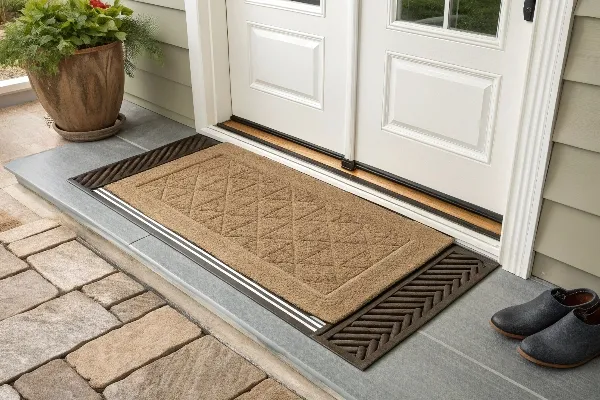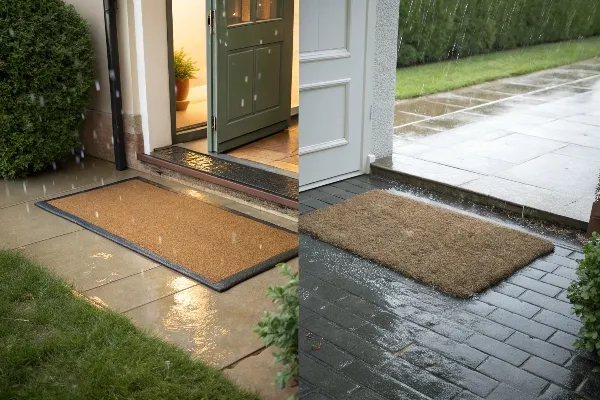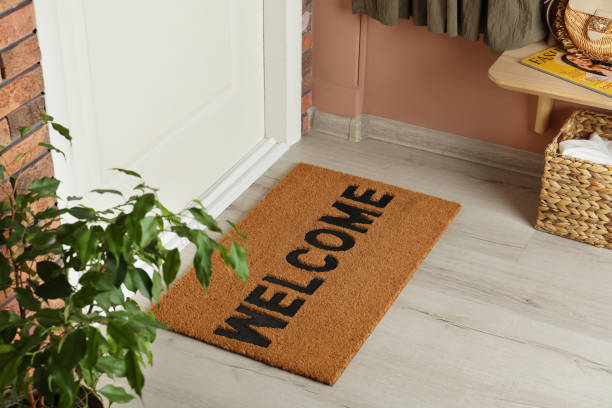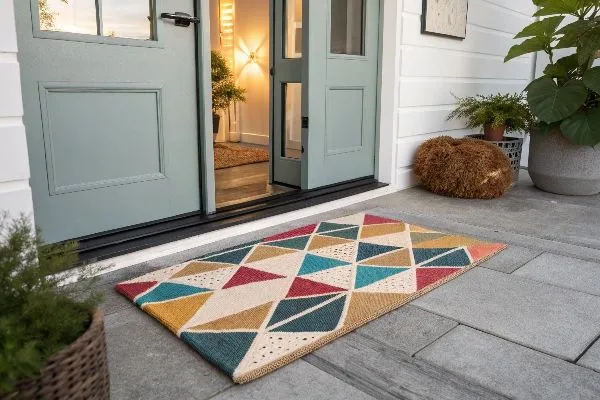Choosing the right doormat for inside your home is essential for keeping your floors clean and adding a welcoming touch to your entryway. But with so many options available, how do you know which one is best for the inside of your home? Let's dive into the key factors to consider when selecting an indoor doormat, including size, material, and style.
The best indoor doormat should be both functional and aesthetically pleasing. It should help trap dirt and moisture while complementing your home’s decor.
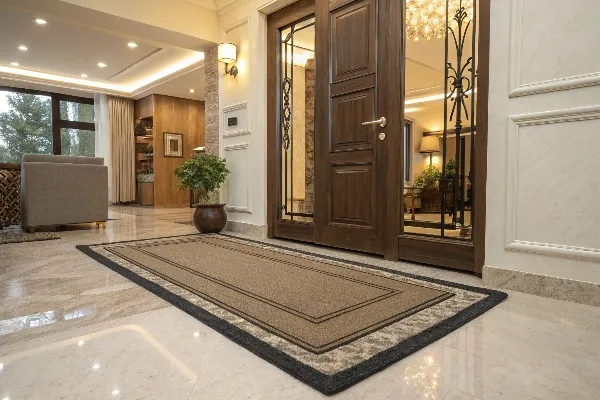
When it comes to indoor doormats, the focus is primarily on keeping dirt and moisture out of the living spaces. But there are many factors to take into account, such as the material’s ability to absorb moisture, how easy it is to clean, and how well it matches your home’s interior style. Let’s break it down further.
How big should an indoor doormat be?
La dimensione del tuo indoor doormat1 plays a significant role in its effectiveness. A mat that’s too small won’t capture enough dirt or moisture, while one that’s too large might obstruct the door or disrupt the flow of your space. So, how big should an indoor doormat be?
The ideal size for an indoor doormat depends on your entryway's space and the level of traffic in your home. Typically, doormats should cover the width of the door and extend several inches beyond it.
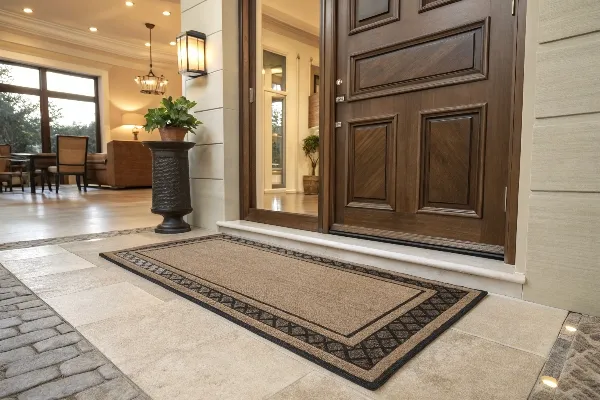
Standard Doormat Sizes
- Small Mats (18x30 inches): Ideal for smaller entryways or if you just want a mat to catch dirt right in front of the door. These mats are compact and easy to maintain but might not cover a large area.
- Medium Mats (24x36 inches): A more common size for standard entry doors. They provide a good balance of coverage without overwhelming the space. Perfect for homes with moderate foot traffic.
- Large Mats (36x60 inches): Best for larger entryways or homes with high traffic. These mats provide more surface area to capture dirt and moisture, which is ideal if you live in a rainy or muddy area.
Consider the Door and Entryway
The size of your doormat should be relative to the door’s width. Measure the space between the door’s edges and the walls before choosing a mat. The mat should be large enough to allow people to step fully onto it before entering, but not so large that it blocks the door’s operation or looks out of place.
What is the difference between indoor and outdoor door mats?
Indoor and outdoor doormats are both essential for maintaining a clean home, but they are designed with different purposes in mind. Let’s explore the key differences between the two.
Outdoor doormats2 are built to withstand the elements, while indoor doormats are more focused on cleaning and complementing interior spaces.
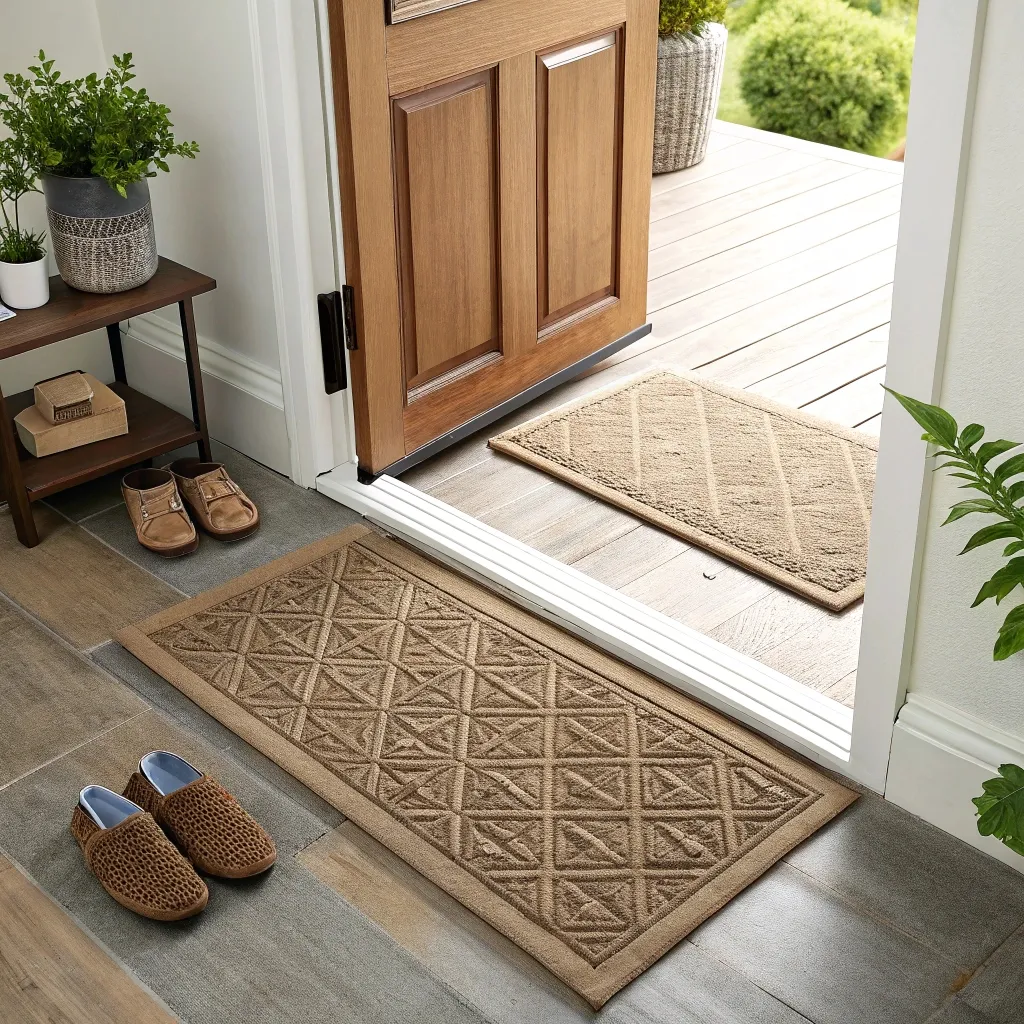
Key Differences Between Indoor and Outdoor Mats
-
Materiale:
- Outdoor mats are often made from more materiali durevoli3 like rubber, coir, or synthetic fibers to withstand weather conditions, such as rain, snow, and UV exposure.
- Indoor mats are made from softer materials like cotton, microfiber, or polyester, which are better suited for absorbing moisture and trapping dirt without being as rugged.
-
Funzionalità:
- Outdoor mats are designed primarily to scrape dirt, mud, and debris off shoes before they enter the home.
- Indoor mats focus more on keeping the dirt and moisture contained after people enter, and they often have a softer surface for comfort.
-
Progetto:
- Outdoor mats often have more rugged and functional designs, with deeper grooves and patterns to catch dirt.
- Indoor mats are typically designed with aesthetics in mind, blending with the home’s interior decor while still performing their function of trapping dirt and moisture.
Why the Difference Matters
The materials used in indoor mats are usually softer and more comfortable, while outdoor mats need to be more durable to handle the elements. You wouldn't want to use a highly absorbent cotton mat outdoors, as it would get soaked easily, while an outdoor rubber mat wouldn’t work well inside your home because of its tough texture.
Dovresti usare uno zerbino per interni?
Many people wonder if it’s really necessary to have a doormat inside the door. After all, isn’t the outdoor mat enough? The truth is, an indoor doormat offers several benefits that can keep your home cleaner and more welcoming.
Having an indoor doormat is essential for trapping dirt, moisture, and debris that people may bring inside. It helps maintain a clean, dry floor and protects your interior from outdoor elements.
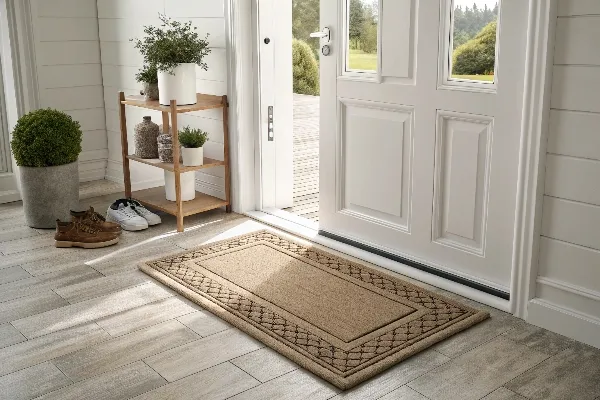
Benefits of an Indoor Doormat
- Dirt and Moisture Control: Even if you have an outdoor mat, people still track in dirt, dust, and moisture from the outside. An indoor doormat provides an additional layer of protection, catching whatever remains after stepping inside.
- Protegge la pavimentazione4: Regular use of a doormat can prevent scratches, stains, and discoloration caused by dirt or moisture on your floors. This is especially important for hardwood, carpet, or tile flooring.
- Improved Cleanliness: Having a mat inside encourages family members and guests to wipe their feet or remove shoes, which keeps the rest of the home cleaner.
- Enhanced Aesthetics: An indoor mat adds a decorative touch to your entryway. It can be chosen to match the color scheme, style, and overall vibe of your home.
Placement Considerations
It’s ideal to place an indoor doormat just inside your entryway, near the door. However, you also want to ensure that it doesn't obstruct foot traffic. The mat should be placed where people naturally step after entering, and it should be large enough to accommodate the area without crowding.
What size should an indoor doormat be?
When selecting an indoor doormat, size is one of the most important factors to consider. The right size will ensure that the mat is functional while enhancing the look of your ingresso5. But how can you determine the perfect size?
The size of your indoor doormat should be proportional to the size of your entryway and the amount of foot traffic in that area.
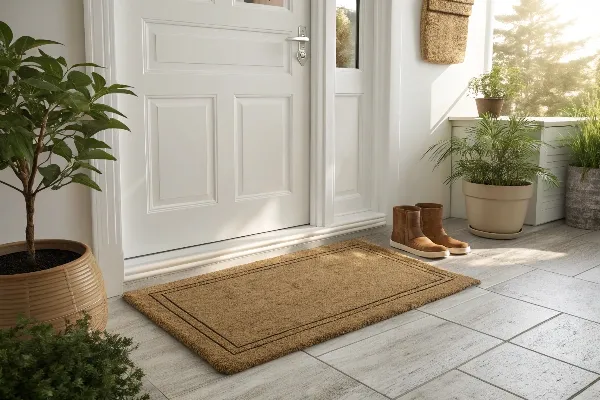
Choosing the Right Size for Your Space
- Small Entryways: If your entryway is narrow or has limited space, a small mat (18x30 inches) will do the job. It should be just wide enough for people to step on as they enter, without taking up too much room.
- Standard Entryways: For most homes, a medium-sized mat (24x36 inches) works perfectly. It offers enough coverage to capture dirt and moisture while still leaving enough space for foot traffic.
- Large Entryways: If your entryway is expansive, a larger mat (36x60 inches) might be necessary. This ensures that the mat covers a larger portion of the floor, trapping dirt and moisture more effectively.
Consider the Shape
Doormats come in various shapes, including rectangular, square, and round. A rectangular mat is usually the most common, but if your entryway has unique dimensions, you might consider a square or even a custom-shaped mat to suit the space.
Conclusione
Selezione del right indoor doormat involves balancing size, material, and functionality. A doormat that is too small won’t catch enough dirt, while one that’s too large may block the door or disrupt the flow of the entryway. The best mat will be one that fits your space, complements your home’s decor, and helps keep your floors clean and dry.
-
Understanding the ideal size for an indoor doormat can enhance your home's cleanliness and aesthetics. Explore this link for expert insights. ↩
-
Explore the advantages of outdoor doormats to understand their durability and functionality in protecting your home from dirt and moisture. ↩
-
Discover the best materials for outdoor mats to ensure they withstand various weather conditions and last longer. ↩
-
Discover how indoor doormats can prevent damage to your floors, saving you money on repairs. ↩
-
This resource will help you understand how to choose the right entryway mat size based on your space and foot traffic. ↩

